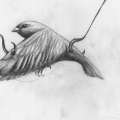This project has its roots in the early part of 2012, when I approached the European Space Agency with a very ambitious proposal: to produce the most comprehensive survey ever assembled about a leading scientific and space exploration organization. Though notoriously secretive, I contacted ESA at an interesting time in their history when they were looking to open up to the public. Unlike NASA or CERN, ESA did not have an artist residency. So I was delighted when they agreed to support my endeavor.
It was the first time in its history that they granted an artist exclusive access to all of its facilities, staff, programs, technology, etc. The access I was granted was unparalleled, even within the framework of the residency programs specified above. This project had an 18-month gestation period and so was launched in 2014 It covered more than 15 separate facilities, located across the world: from the UK, to Holland, France, Germany, Spain, Russia, Kazakhstan, French Guiana, etc. These locations ranged from test centers, robotics departments, jet propulsion laboratories, space simulators, launch sites and platforms, astronaut training centers and training modules, satellites, technological component and launcher assembly rooms, etc. I feel fortunate that ESA recognised, through my proposal, that artists and cultural users should be entitled to access and engage with space. I was also heartened that ESA welcomed the idea that I may bring with me a critical and artistic perspective. This projects looks, therefore, to engage with ESA and its partners’ programs –the microgravity, telecommunication, navigation, lunar and Mars exploration programs, among others–, whilst also reflecting on the new politics of space exploration as well as the impact of this kind of technological application on our social consciousness. As someone who has always worked in hard-to-access environments, I am interested in the dialogue that these environments can provoke. There are multi-layered challenges for artists working within any established structure – cultural, ethical, legal. In the case of space exploration organisations this can be further exacerbated given the increasing privatization and militarization of space and the constraints that these engagements can activate. So my main challenge was to develop an approach that was simultaneously descriptive and speculative, documenting but also deconstructing the spaces and objects, and thus not only documenting their historical and scientific value but also their poetic derivations and revealing their cultural and ideological resonances.
Edgar Martins: Solar Visions
LINK: www.edgarmartins.com
VIDEOCOMMENTSRELATED POST |
|
|
|
|








































